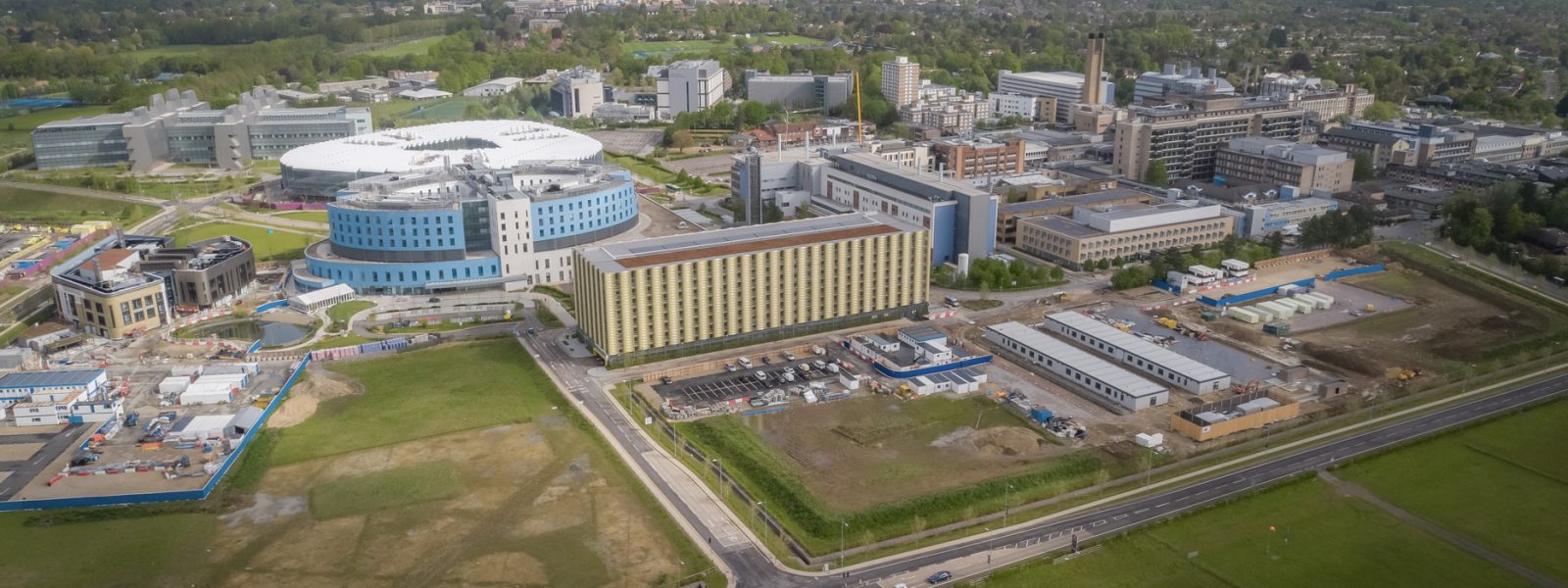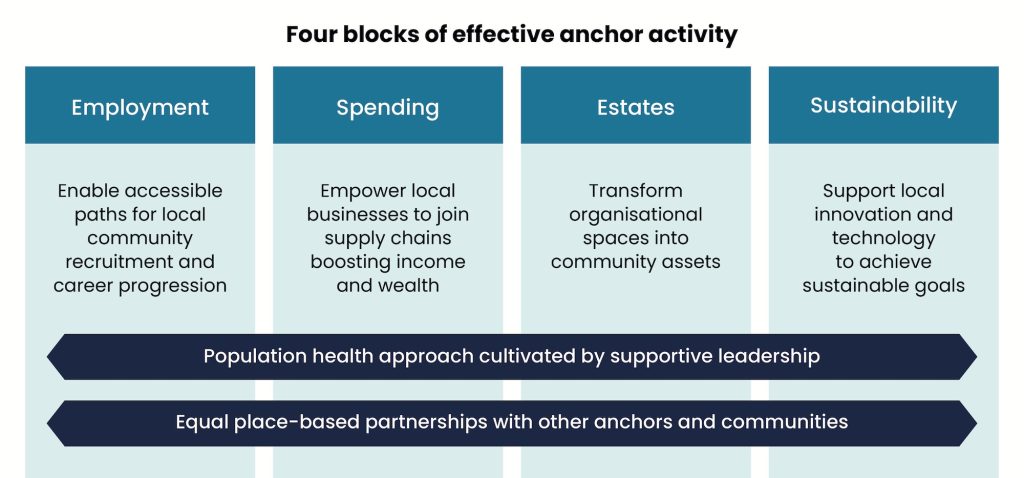Feeding two birds with one scone: Leveraging NHS anchor activity to reduce health inequalities and contribute to thriving communities

Discussions around population health and economic growth and their interconnectedness have intensified since the new government came to power. Parliament and cabinet members highlight the importance of cutting NHS waiting times and optimising prevention programmes to enable people to stay healthy and economically active. What seems to be less discussed – at least for now – is how the fundamental drivers of poor health and health inequalities will be tackled and to what extent the NHS can contribute to this goal.
We recently published a study (1) looking at how healthcare organisations can improve the social determinants of health for their local communities. Our aim was to focus on what the NHS calls ‘anchor activity’ and understand the potential that NHS organisations have to boost socioeconomic activity in their local areas. According to its strategic plan to reduce health inequalities, the NHS aspires to function not solely as a care provider but to play an active role – as an ‘anchor institution’ – in supporting partner organisations and communities to address the wider determinants of health like employment, housing and natural environment (2). Anchor institutions are large organisations rooted in specific areas and communities, using substantial resources to address social needs and enhance community wellbeing (3). By being the largest employer in the country and receiving the largest share of government procurement spending, NHS and its organisations is a major economic player who can function as an economic development engine.
During our study we spoke with a diverse range of people who were actively engaged in the anchor activity of secondary NHS organisations including mental health and community services across the country. Adopting a realist approach, we combined factual evidence with the knowledge of people experienced in the field and synthesised it in a framework for effective anchor activity. In summary, our framework suggests that NHS organisations – as anchor institutions – can improve the social determinants of health of local communities through:
1) Employment by enabling accessible paths for local community recruitment and career progression.
2) Spending by empowering local businesses to join supply chains boosting income and wealth.
3) Estates by transforming organisational spaces into community assets.
4) Sustainability by supporting local innovation and technology to achieve their sustainability goals.
The people we spoke to noted that anchor activity is a long-term project with long-term effects. In order for this project to be impactful, NHS organisations need to adopt a population health approach promoted by supportive leadership and close collaborations with a diverse range of local partners. These two elements are the connecting material that can keep anchor activities integrated across organisations, responsive to local need and co-created with local communities.
The study gave us the privilege to speak with people driving change within their organisations and in their local areas, each one from their own position. This provided us with unique insights to the challenges around anchor activity. For example, we learnt about the barriers in employing local people in disadvantaged areas due to complicated bureaucratic recruitment procedures and paperwork or the difficulty in increasing local spending without a good understanding of local markets and suppliers.
However, it also revealed an increased level of understanding among NHS professionals around the fundamental drivers of health inequalities. Respondents stressed the need for further integration of a population health approach for addressing the social determinants of health, and for horizontal relationships with other local anchors and communities. As one of the study participants put it, NHS organisations “need to just walk humbly and say what [they] have got, well, jobs and money and some presence in place” but they need to work on earning the trust of their communities. In a context where the NHS is increasingly described as dysfunctional, we should not forget that it is its people who know best how to fix it and it’s the communities who know best what will enable them to thrive.
References
- Gkiouleka A, Munford L, Khavandi S, Watkinson R, Ford J. How can healthcare organisations improve the social determinants of health for their local communities? Findings from realist-informed case studies among secondary healthcare organisations in England. BMJ Open. 2024 Jul 1;14(7):e085398.
- NHS England » Anchors and social value [Internet]. [cited 2024 Jul 30]. Available from: https://www.england.nhs.uk/about/equality/equality-hub/national-healthcare-inequalities-improvement-programme/our-approach-to-reducing-healthcare-inequalities/anchors-and-social-value/
- Koh HK, Bantham A, Geller AC, Rukavina MA, Emmons KM, Yatsko P, et al. Anchor institutions: best practices to address social needs and social determinants of health. American Journal of Public Health. 2020;110(3):309–16.

